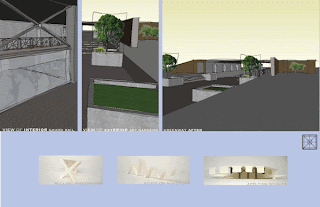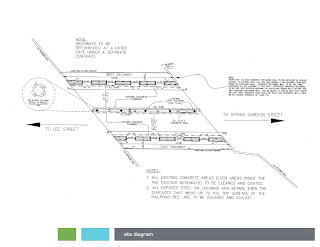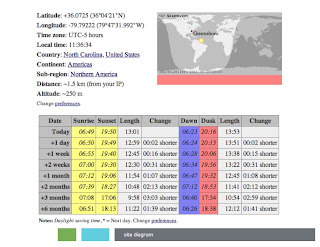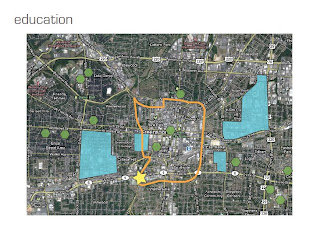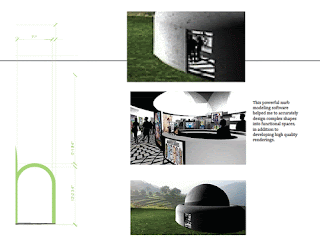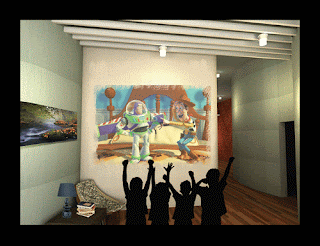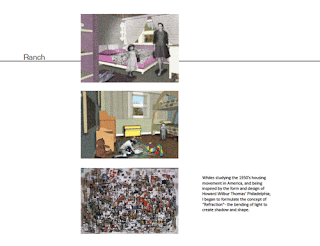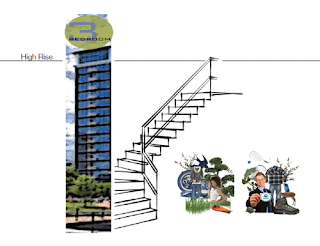Thursday, September 8, 2011
Tuesday, August 30, 2011
Sustainable event: one
Just the other day my friend Carlos and I took a trip to the Piedmont Triad Farmers Market. I have lived in the Greensboro area for about four years now and Carlos, his whole life. Yet, neither one of us had ever been to the Farmers Market. As we arrived we were very excited to see all the venders and smell all of the fresh sweet fruits. I also took note of the planning of the space. There were about five to six permanent indoor-outdoor structures with space for vender’s tables, tents, and trucks. There were also designated restroom locations in addition to electric; to keep the produce and dairy products cold. One thing I didn’t expect to see was out of season/ long distance foods. Perhaps I am not well versed in the capabilities of North Carolinas growing climate but I am most certain that avocados usually grow in Mexico and carrots don’t grow themselves into a bushel and then put themselves into a grocery store bag. That’s when I began to think how could a farmers market be unsustainable? So I started to ask around and found that the first two venders I spoke with were from somewhere near Ashville. That’s about 172 miles away! Can you imagine the price in gas it took to get them here? Ok, Maybe that’s not so bad. Isn’t the rule of thumb that something must be within 500 miles to be considered sustainable? Never the less, thinking about the trucks driving all that way made me consider the parking lot. Was there really a need to lay all of that asphalt? Couldn’t the contractors keep the gravel lot? Well maybe I was visiting on a slow day, (Sunday afternoon) maybe there are busier days where all this space is really needed. Next I got to thinking about how people, non-farmers, would get to the market. Was there a bus station? Could a passenger train stop by? Sure, the market is right off of rout forty which makes it convenient for automotive travelers but I couldn’t imagine anyone trying to ride their bike here.
Art vs. the Architect
I think that after my parent’s generations and mine pass; a work like Peter Eisenmann’s “Melting Bong” in New York would not be ridiculed but instead looked at as something wonderful, and perhaps even inspirational. I can imagine decades from now individuals looking at that building and wondering why it looks as if it were falling; then quickly recalling its meaning and purpose. As for Frank Gehry’s “Lou Ruvo Brain Institute” in Las Vegas, the same can be said… It is true that the building is abstract and that its concept was clearly derived from its users. As a student of design, I can understand and appreciate the works of these gentlemen. At the same time I try to extract myself and put my perspective into someone else’s point of view, the common civilian. Would I be offended? Confused? Should I be?
All this brings me to an other point of thought- how is it that designers and architects alike can be so related in their abstract ways of thinking but so legally separated? Currently, our society looks at designers as a “caddy” and architects as the “professional golfer”. Each could do their job by themselves but would be much more successful working together.
Moreover, who’s to say that architects are not just privileged artists with math and science skills. I have recently read a passage in my studio class: Color in Architecture by Rasmussen from the book Experiencing Architecture, MIT Press, 1992. In the passage Rasmussen makes the point that “despite all theories on color there is no definite rule or direction that state- if closely followed one can guarantee good architecture” (Rasmussen, p219). If this were so, all design students would receive A’s but that’s just not the case because our craft is one of opinion, not of easily memorized facts and equations. So how is it that we create an accredited standardized test? After all, beauty is in the eye of the beholder.
Wednesday, August 24, 2011
Greenway
the Effects of Light and Color in Architecture

“Our experience of light is grounded in the place or places with which we are familiar” (Reinhold , p5). On page fourteen Reinhold begins to discuss “Light as image of nature” it is stated “light can still remind us of places that we know through recreating their particular patterns of light” (Reinhold, p.14). This reminds me of the columns and colonnades found in ancient Greek and Egyptian temples that weren’t only used to lighten the intensity of the harsh Mediterranean sun but to also create lighting affects that would slowly ease the users eye into the darker spaces of the site; much like the experience of one entering into a forest from a parry.
“In architecture color is used to emphasize the character of a building, to accentuate its form and material, and to elucidate its divisions” Rasmussen. For ages man has decorated his dwelling. Rasmussen uses the example of the Greek temples once vibrantly colored walls- much different for the white washed walls we see today. Yet he argues that unlike a piece of art, architecture is primary concerned with form and if the form and articulation of the space is correct, a structure can withstand the tests, and fads, of time with or without color. Rasmussen goes on to say that despite all theories on color there is no definite rule or direction that states- if closely followed one can guarantee good architecture (Rasmussen, p219). These readings have tough me that even though one cannot guarantee good architecture; it is possible to create space and form through the use of lighting techniques in conjunction with the addition of color.
Tuesday, August 23, 2011
IDPC: Overview

NKBA: Overview
The National Kitchen & Bath Association (NKBA) is a non-profit trade group comprised of some 40,000 members with career fields ranging from: manufactures, installers, designers, distributors, retailers, fabricators, and remodelers. The NKBA has a certification program that emphasizes continuing education. Degree Programs are accredited and offer students opportunities to specialize in kitchen and bath design.
Not only does the NKBA offer accredited programs to a list of different colleges and universities, but it also prepares students to qualify/earn their AKBD or Associate Kitchen & Bath Designer certificate.
The NKBA is also responsible for the largest worldwide trade show- Kitchen & Bath Industry Show (KBIS)
Friday, April 22, 2011
Monday, April 11, 2011
A little nerve wrecking.

So we're down to two weeks left and the group still hasn’t officially decided on a concept or a site plan. Yikes! Good things come to those who wait… right?
Thursday, April 7, 2011
David W. Orr

Thanks to Denis Quaintance form Quaintance Weaver Restaurants and Hotels, David Orr was able to come to the University of North Carolina at Greensboro and speak to the academic community about sustainability. He gave a rather compelling speech on how humans have an natural fight or flight response to unexpected events; however, for some reason when thousands and billions of decimals are added to the equation we are no longer interested in responding to that potentially harmful fact. He gave examples of: the rector nine event and forty to fifty-foot tsunami in Japan; the I-35 bridge leaving Manhattan; and the atmospheric carbon dioxide measured at Mauna Loa, Hawaii. Orr used rather creative speech methods to “wake-up” the crowd and make them think! He put great emphasis on how it is the responsibility of individuals of our generation to make the changes that will impact our world thousands of years form now. Orr also stressed that if nature made every critical system to have two parts (ie. Kidneys, lungs…) then why shouldn’t the systems we as humans put in place also have two systems?



